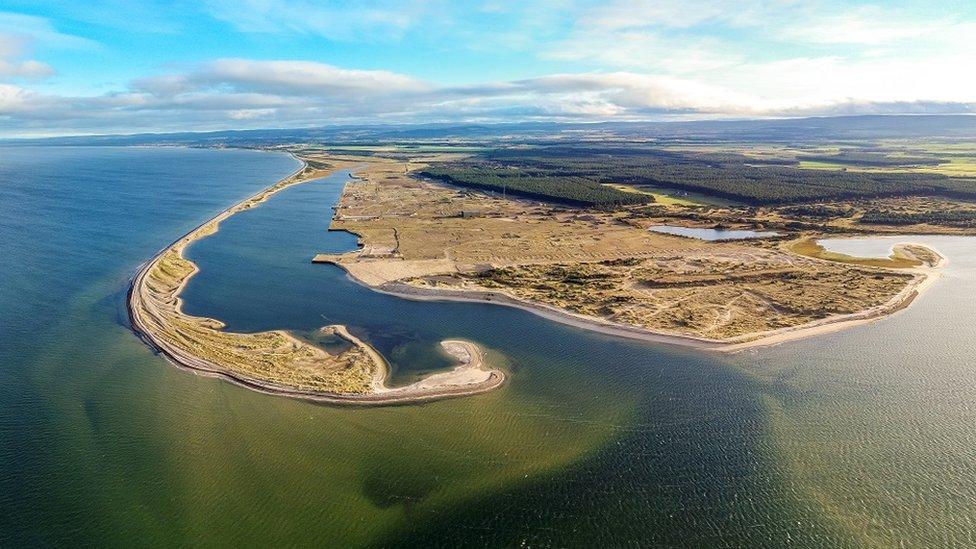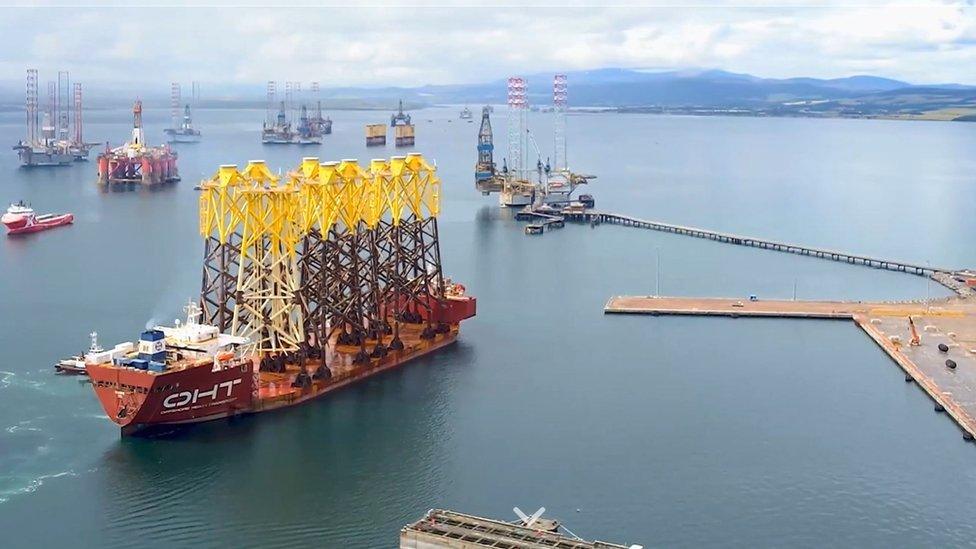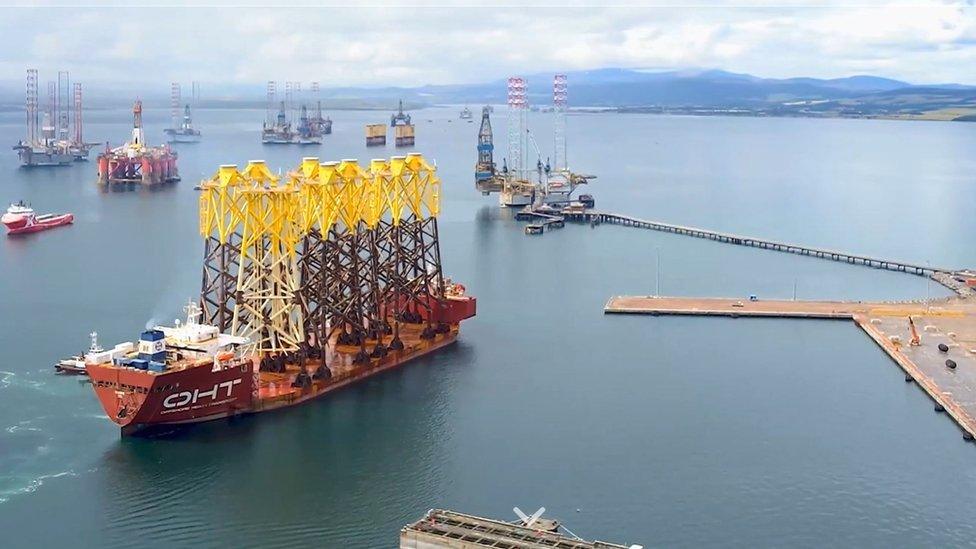The coastal revival on Scotland's horizon
- Published

Ardersier Port used to be one of the big fabrication yards for the North Sea
The spit of Moray Firth coast at Ardersier used to be of vital strategic significance in ensuring the Jacobite clans could never rise again, and the French could not get into the hearts of the Highlands to help them.
That's why Fort George is an imposing structure, intended to intimidate.
Nearby Ardersier Port could be on the way to becoming a vital strategic location for a different purpose, linking energy across the North Sea rather than defending from it.
The 450-acre site used to be one of the big fabrication yards for the North Sea oil and gas industry, where thousands were employed by McDermott's to build vast structures for the pioneering offshore industry.
It has been a forlorn site and sight for more than 20 years, despite much discussion of what could be done with it. But £300m of funding from a US energy investment fund, Quantum, says it's on the way back.
Nearby, the Cromarty Firth and Inverness team that won the bid for Green Freeport status are working through the details of how it's going to work, between the powers of two national governments and one of the local variety.

Cromarty Firth is one of two Scottish sites chosen to host a green freeport
Having been announced in January, that could take 12 months. And while investors are being encouraged to line up their plans, clarity on how it works will take patience.
Ardersier Port falls outside the boundaries, but even without those tax breaks, the numbers apparently stack up for Quantum investors to commit the funds for preparation of the site.
And work is already under way, clearing the site and preparing it for the final quarter of next year, when the first customers are expected to move in, both for decommissioning of oil and gas equipment and - a far bigger prospect - the lay-down and assembly requirements for the enormous ScotWind projects being planned around the coast of Scotland.
The project now has a chief executive in Lewis Gillies, an engineer from the north of Scotland, with 20 years experience with BP and 15 in private equity-backed energy projects.
The task ahead
Taking over operations from the founding partners of this venture, he will work for a newly created parent company, given the name Haventus.
A few miles away, as the gull flies, Nigg in Easter Ross was another legacy of the oil and gas boom years. Global Energy has re-energised it to become a key part of the Cromarty Firth freeport bid.
There should be more than enough work to go around. Whereas other sectors might face the risk of being undercut by too much competing capacity, it's hard to imagine the east coast of Scotland having sufficient capacity for the ScotWind task ahead.
So after several unhappy years as BiFab, the yards at Methil in Fife and Arnish near Stornoway are well-placed for more work as part of Harland and Wolff, including a good location on Lewis for the first wind farms in Scotland's Atlantic waters.

Forth Ports is investing in Leith docks to prepare it for very large floating turbines to come alongside the strengthened quay. It shares the benefits ahead of green freeport status.
Loch Kishorn on the Wester Ross coast is also being revived for offshore energy work, decades after being a centre for building concrete platforms.
The prospects for large-scale manufacturing remain frustratingly distant, as equipment for offshore wind is fabricated elsewhere and then brought to the Scottish coast for final assembly and preparation for shipping out to the windfarm sites.
Some hope is pinned on the new technologies required for floating turbines. Scotland had the first such wind farm, using Norwegian technology.
A huge ask
Its pipeline of orders for floating wind, following a new round of bids to build out capacity to de-carbonise the energy required by offshore oil and gas platforms, is reckoned to be nearly a third of the current world total.
Achieving the scale and efficiency required for fabrication in that is a huge ask for the Scottish engineering sector.
Denmark took a lead in wind turbine design and manufacturing and Germany's engineering giant, Siemens, followed. These countries were part of a coalition of North Sea European Union members that agreed to work more closely together when they met in Denmark last year.
This year, in the Belgian port of Ostend, they have invited the UK and Norway, as well as some without a North Sea presence but with a big interest in offshore wind; Ireland, France and - as a financial centre, Luxembourg.
Moving away from dependence on Russian hydrocarbons has focussed attention on how best to co-ordinate across North Sea marine boundaries.
A new power cable has been announced, linking the Netherlands and England - set to be one of the highest capacity links in the world.
Over the horizon, a new generation of energy is taking shape. The potential for onshore support along the east coast of England and Scotland is drawing the UK closer to Europe, despite Brexit.
- Published13 January 2023

- Published17 January 2022
